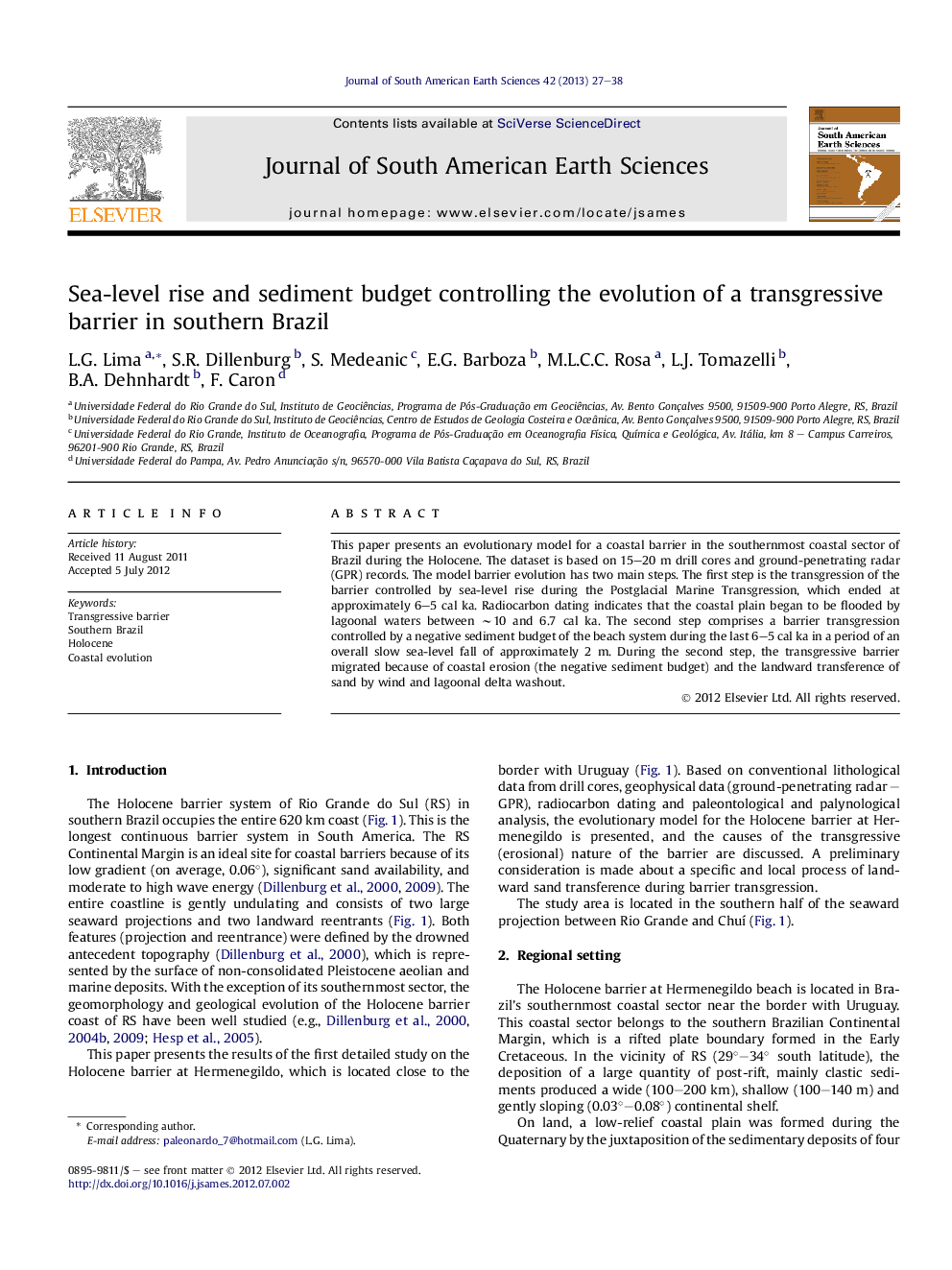| Article ID | Journal | Published Year | Pages | File Type |
|---|---|---|---|---|
| 6431457 | Journal of South American Earth Sciences | 2013 | 12 Pages |
This paper presents an evolutionary model for a coastal barrier in the southernmost coastal sector of Brazil during the Holocene. The dataset is based on 15-20 m drill cores and ground-penetrating radar (GPR) records. The model barrier evolution has two main steps. The first step is the transgression of the barrier controlled by sea-level rise during the Postglacial Marine Transgression, which ended at approximately 6-5 cal ka. Radiocarbon dating indicates that the coastal plain began to be flooded by lagoonal waters between â¼10 and 6.7 cal ka. The second step comprises a barrier transgression controlled by a negative sediment budget of the beach system during the last 6-5 cal ka in a period of an overall slow sea-level fall of approximately 2 m. During the second step, the transgressive barrier migrated because of coastal erosion (the negative sediment budget) and the landward transference of sand by wind and lagoonal delta washout.
⺠Model of a transgressive barrier evolving under a sea-level fall condition. ⺠Integration of litological data (drill holes) with geophysical data (GPR). ⺠Palynology as an element of environmental interpretation. ⺠Connection between barrier transgression and formation of transgressive dunes.
